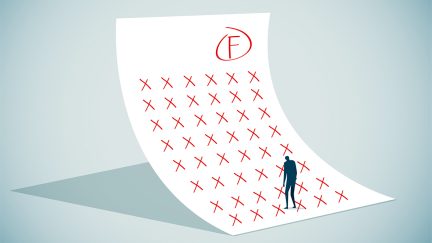Never miss a story — sign up for PLANADVISER newsletters to keep up on the latest retirement plan adviser news.
BofA Advocates 401(k) Plans Designed for Action
Bank of America Merrill Lynch (BofA) makes the case for automatic enrollment, automatic escalation, company matches, education and advice, plus regular plan and participant checkups.
Until recently, many 401(k) sponsors have been disconnected from their plans, BofA says in a new white paper titled “Success by Plan Design.” Plans designed to spur action and engage participants, on the other hand, have higher participation and contribution rates, better outcomes, and more loyal and dedicated employees, BofA says.
“We believe that privately sponsored corporate retirement systems, particularly 401(k) plans, are successful—and can be even more so by creating a path for employees, starting with auto enroll,” Kevin Crain, head of institutional and benefit services atBank of America Merrill Lynch, told PLANADVISER. “Twenty-five percent of employees who are auto enrolled become more engaged in their plans. More providers are adding in advice, giving participants a real incentive to become actively engaged. With the greater employee engagement we are seeing, and with plan and service enhancements, we can help make 401(k) plans even more vibrant.”
Advisers can equip sponsors with comprehensive, yet simply designed solutions to help them take action and motivate even young and difficult demographics, such as low-wage earners or older employees with low balances, to take advantage of their 401(k) plan by showing them the increasing power of compounding or the benefits of catch-up provisions, BofA says. Retirement readiness is not as elusive a goal as many sponsors and participants fear, BofA says. “We believe that long-term financial security is easier to achieve than many think,” the white paper says.
“It is paramount that these plans work,” Crain said, noting great improvements that have been made to 401(k) plans since their inception, including automatic enrollment and target-date funds. In the next decade, Crain foresees “even more advanced plan designs that will automatically guide participants into retirement income mode.”
An action-based plan starts with automatic enrollment and a contribution rate of at least 6% that gradually, through annual increases, escalates up to 18% or more, BofA suggests. An action-oriented plan would also extend automatic enrollment and increases to all employees, not just new hires, offering it each year by combining annual health care and 401(k) annual enrollment. Employers’ standard 3% matches could be redesigned with an eye to boost contribution rates, replacing the 100% match of the first 3% of contributions with a 50% match on the first 6%, for example, or 25% match on the first 12% of contributions, BofA says. Additionally, the plan sponsor might consider increasing the maximum contribution participants can make to the permissible $17,000 a year allowed by the Department of Labor for those under the age of 50 and to $22,500 a year for those who are older, BofA says.
“Associating overall health and financial wellness creates a sense of urgency on the part of employees to engage in their plan,” BofA says. “When sponsors make it easier for employees to enroll in the plan and raise their contribution rates, employees are more likely to take action. Proof is in the numbers. In 2001, 90% of participants in Bank of America Merrill Lynch plans took positive action by either enrolling or increasing their contributions when health care and 401(k) events were connected.”
BofA data shows that 25% of plans with automatic enrollment have higher average participation rates, and that 43% have higher participation rates among younger employees. Plus, 97% of employees who are automatically enrollment do not opt out—even with a higher default rate of 6%.
Additionally, nearly one quarter(23%) of the plans that BofA administers added the automatic increase feature in the past year.
Education and individualized advice should also be an integral part of a retirement plan, BofA says. Bank of America Merrill Lynch’s 2012 Workplace Benefits Report found that 79% of employers anticipate greater employee demand for investment advice in their plans. Sprectrem research also found that 75% of plan sponsors would offer voluntary planning and advisory workshops, and that 70% of participants would take advantage of company-sponsored personal finance and investment services. BofA suggests that this advice go beyond retirement to cover “budgeting, home ownership, insurance, health care, college planning, estate planning, eldercare and offerings tailored to the unique needs of women.”
BofA offers its 401(k) clients Advice Access, which helps participants set financial goals and select investments based on “unbiased third-party recommendations [and] automatic reallocation and rebalancing” from Ibbotson Associates. The service also takes into consideration participants’ assets outside of the plan. For sponsors, BofA offers the Financial Wellness Monitor to assess how well participants are using their 401(k) plan and to provide comparative data on other sponsored plans.
As to sponsors’ concerns over the cost of providing a retirement plan or providing a company match, BofA reminds employers that matching a modest salary does not put an undue hit on the bottom line, plus, company matches are tax-deductible for sponsors.
“Advisers are longing to show sponsors value,” Crain says. “Retirement plan advisers have the tools available today to advance the designs of 401(k) plans and their uses, to improve the health and vibrancy of the 401(k) plans they serve. When this works, employees know they have been helped, and the adviser has an opportunity to establish a long-term relationship. We feel very strongly that the 401(k) system has been successful and can be even more successful. The way to do that is obvious. The solutions are easy and not costly. I definitely have a great sense of optimism for 401(k)s in the next decade ahead.”


